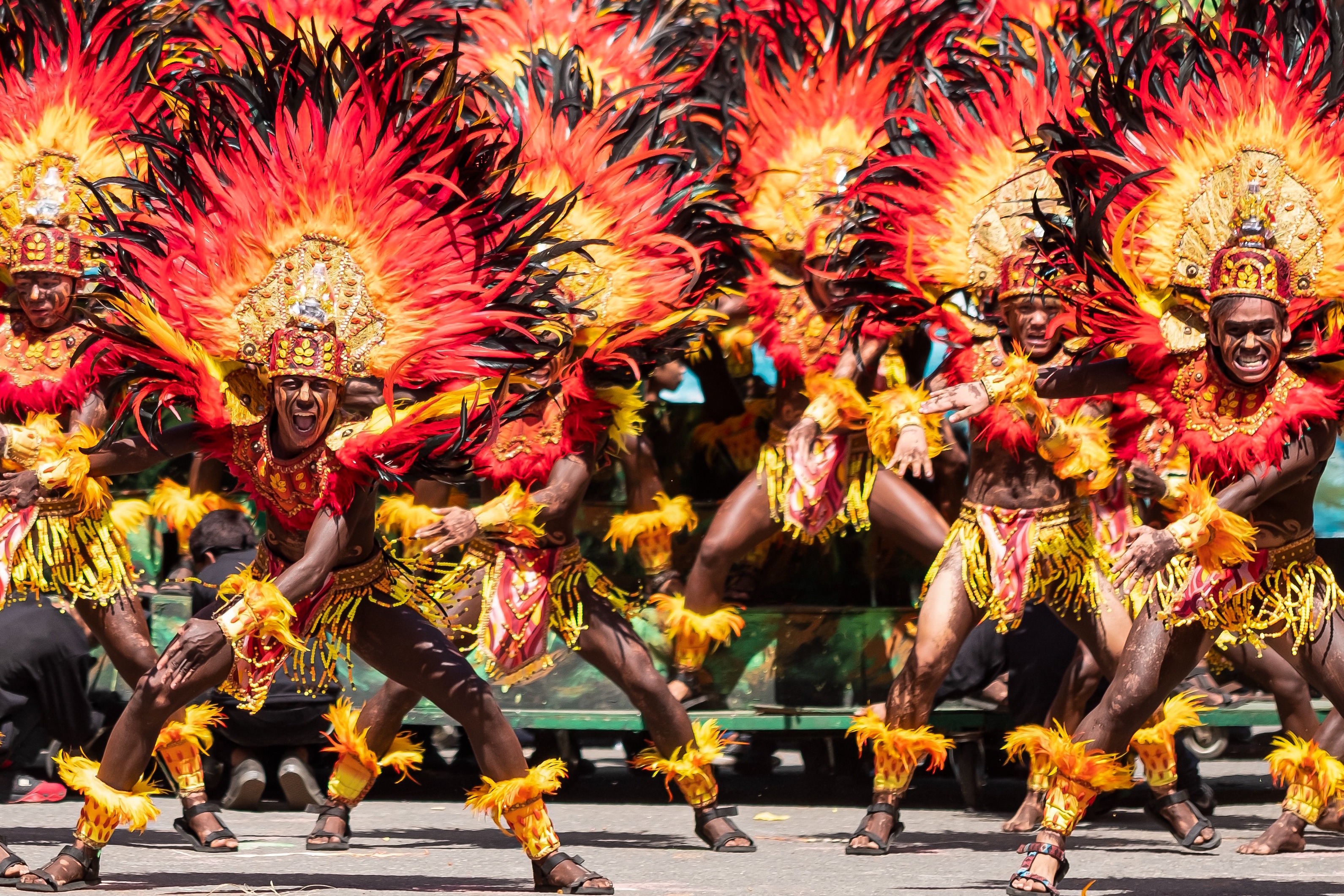Dinagyang returns to its roots

ILOILO MERRYMAKING The streets of Iloilo City will burst in color and energy as Ati tribes compete in the street-dancing competition for this year’s Dinagyang Festival. Named after the Hiligaynon term for merrymaking, Dinagyang is the biggest crowd drawer on Panay Island. —PHOTOS BY NELSON RONDAN/CONTRIBUTOR
ILOILO CITY—The biggest festival on Panay Island goes back to its roots after 52 years, with contingents competing in Sunday’s Dinagyang Festival focusing more on the traditional dance steps and movements than the props.
“We are going back to the core of what Dinagyang is. We heeded the suggestions of Ilonggos who wanted to make the festival better by bringing back [festival features] that made it an experiential event,” said lawyer Jobert Peñaflorida, president of the Iloilo Festivals Foundation Inc. (Iffi), a private organization composed of business operators and owners set up in July last year to organize and manage various festivals in the city.
Dinagyang comes from “dagyang,” a Hiligaynon word for merrymaking.
It traces its origin in 1968 when Fr. Sulpicio Enderes, OSA, with a delegation of Cofradia de Cebu, brought a replica of the image of Señor Sto. Niño de Cebu to Iloilo City.
The image was taken to San Jose Parish Church where it is still enshrined.In 1969, the first parish feast of Señor Sto. Niño was celebrated to commemorate the event.
The champion and runner-up in the Kalibo Ati-Atihan in Aklan province performed in what is considered the first Ati-Ati festival in Iloilo City.
An Ati-Ati contest was held at Iloilo’s Freedom Grandstand the following year. But in 1977, Ilonggo writer and broadcaster Pacifico Sudario suggested that the festival be named “Dinagyang” to describe its riotous celebration and to distinguish it from other Ati tribal festivals in the country, such as Kalibo’s Ati-Atihan.
Improvements
With less than a year to prepare for Dinagyang 2020, Iffi held meetings with representatives of different sectors, including the arts, business, food industry and media, to gather suggestions on improving the festival.
“We are implementing 90 percent of the suggestions that came up during these meetings,” Peñaflorida said.
Among the major changes is the “reorientation” of the Ati tribe dance contest, the highly anticipated main event of the festival.
Competing tribes are required to perform for a “360-degree audience,” where they will dance on a spot surrounded by the festival crowd. Judges are positioned in four areas with a 360-degree view of contingents instead of simply being in front of the dancers.
Organizers also regulated the use of props and risers (improvised mobile platforms) as performers have been observed to be giving more attention to these materials than perfecting the traditional Dinagyang movements, characterized by the simple forward, backward and side steps, to depict the life of the native Ati people of Panay.
But the modern Dinagyang steps are starkly different from Cebu’s Sinulog and Aklan’s Ati-Atihan, which are also held in January to honor the Holy Child Jesus, as dancers, wearing dark brown body paint, move faster than the other festival performers and choreographed to the rhythm of beating drums.
The merrymaking’s general theme depicts the end of the Ati people’s paganism and the start of the devotion to Sto. Niño.

RELIGIOUS ORIGIN At the center of Dinagyang is a celebration of the festival’s religious beginnings honoring the Sto. Niño (Holy Child Jesus).
Community participation
Eight school-based Ati tribes are competing for the grand prize of P5 million in cash and school projects.
For the first time in decades, the Kasadyahan regional cultural competition was not held after Iffi decided to stage it as a separate festival in August to celebrate the city’s charter anniversary.
In place of the Kasadyahan, the Dagyang sa Calle Real was held on Saturday, which was aimed at bringing back the traditional “sadsad” (street dancing) along the historic Iznart and J.M. Basa streets at the city center. At least 600 drummers and eight barangay-based Ati tribes led the daylong sadsad.
In the past, the barangay-based tribes competed in the Ati tribe contest, but they eventually backed off against school-based contingents, which are better-trained and well-funded.
Iffi brought the village groups back to the Dagyang sa Calle Real to encourage residents to be part of the festival, even if they were not in the main street-dancing contest.
This was in response to observations that the event became too focused on the Ati tribe street dancing competition, easing out the community street dancing.
On Saturday night, bright lights illuminated Calle Real, known for its restored Art Deco buildings, to showcase the restoration efforts of historic structures and sites in the city.
Friday’s Parade of Lights, involving colorful floats and performers in lighted costumes, was expanded to include a route that passed through the stretch of Sen. Benigno Aquino Jr. Avenue at the city center.
The event’s judging areas were at SM City and at Iloilo Business Park of Megaworld Corp., both in Mandurriao District.
An art festival, with events held at the scenic Iloilo Esplanade along the Iloilo River, was among the major components of this year’s Dinagyang.
The changes were highly anticipated with hotels fully booked since late last year, according to Peñaflorida.
“The Dinagyang under a new organizing foundation has been given new life,” said Iloilo Mayor Jerry Treñas, noting that the festival has become inclusive because more sectors have been enticed to participate.